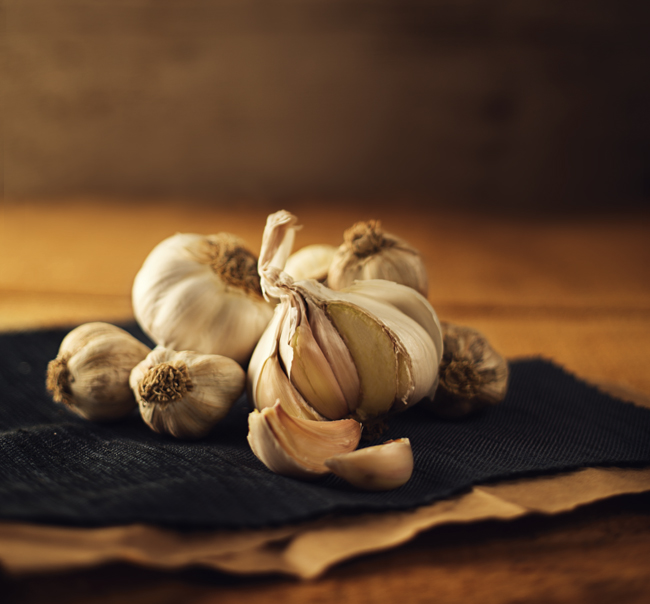Clove Cache: Expert Tips for Cooking with Garlic
Minced garlic, sizzling in a skillet, maintains its place as the most comforting smell from my childhood. As a picky eater, I loved it in the minimalistic pasta sauce of butter, lemon, and freshly ground salt and pepper that my mother made especially for me on days where it was the only food I craved. Best of all, my relationship with garlic continues to expand. Dining out at local restaurants, I recently discovered new ways to relish the versatile ingredient through the delicate, muted flavor of garlic poached in oil, and through the sweet taste of black garlic, which is garlic caramelized over low, consistent heat for several weeks.
Today, I appreciate garlic for its transformative qualities. And, as a rule, I always double the amount called for in recipes. I peel it by rubbing the bulbs in my time-saving silicon rolling tube, and then grate it for salad dressings, rub it on steaks, roast it in the oven, and smash it to spread on bread. Each preparation yields a distinctive flavor, all so undeniably delectable that I can’t play favorites.
Tom Brenckle, owner of Brenckle’s Organic Farm and Greenhouse, has a definitive choice: “My favorite way of eating garlic is raw, and then chasing it with tomato.” Daring, and delicious! Check out his tips for cooking with and cultivating your own garlic.
• Plant separated garlic cloves in loose, well-drained soil, six inches apart, and one-and-a-half to two inches deep. Brenckle plants his garlic in mid-October and harvests it around the fourth of July.
• Consider planting garlic, not just to eat, but also because it wards off insects, including mosquitoes, in the garden.
• Want garlic with a spicier kick? Try Spanish varieties, characterized by pink and purple bulbs.
• To rid your hands of garlic’s strong scent, Brenckle recommends rubbing them on stainless steel.
• Freshly harvested garlic needs to be washed and dried. By keeping garlic away from sunlight and moisture, in a place with ample air circulation, it can keep for months.
• Green or “spring” garlic is an immature form of the garlic most typically used in everyday cooking. It makes for a good swap with members of the onion family, and its mildly nutty flavor brings something new to the table. The entire plant is edible, including the “scapes” or stems. Brenckle likes to eat them raw, in salads, and in stir-fries.
Brenckle’s Organic Farm and Greenhouse, 768 Glen Eden Road, Zelienople. 724.774.2239. brencklesfarm.com.





